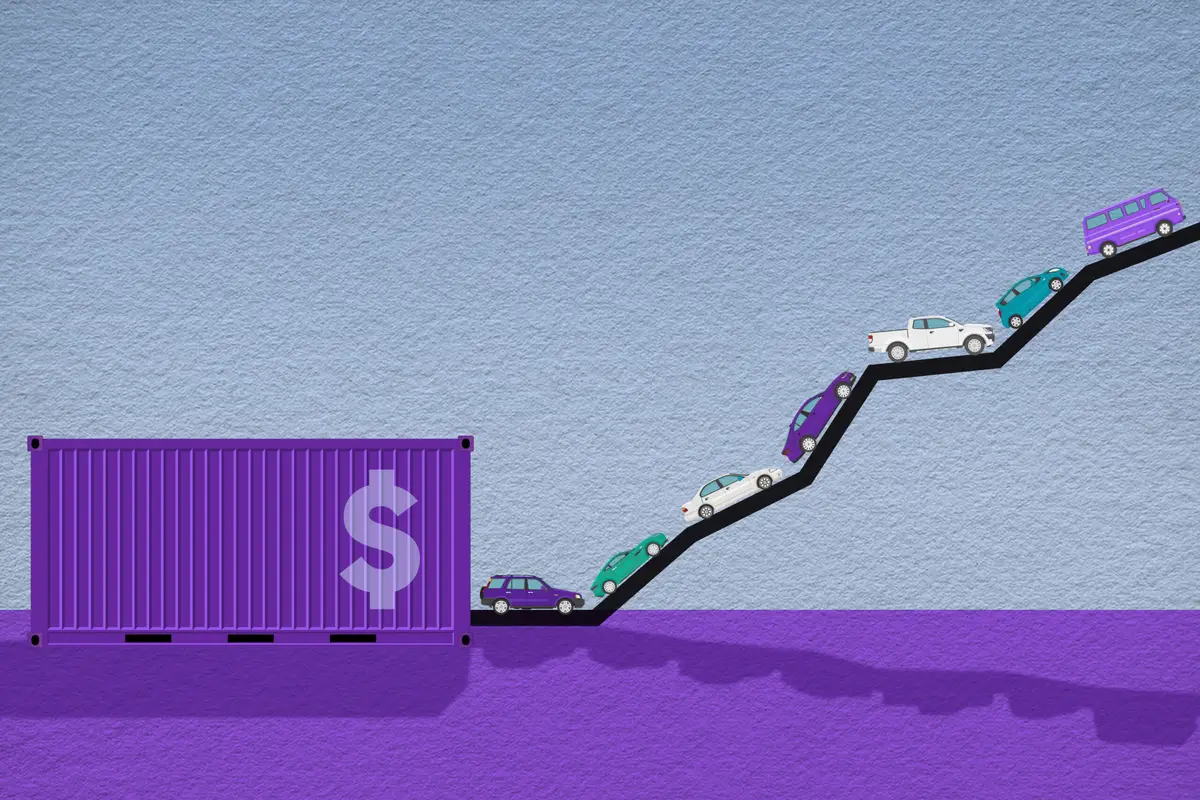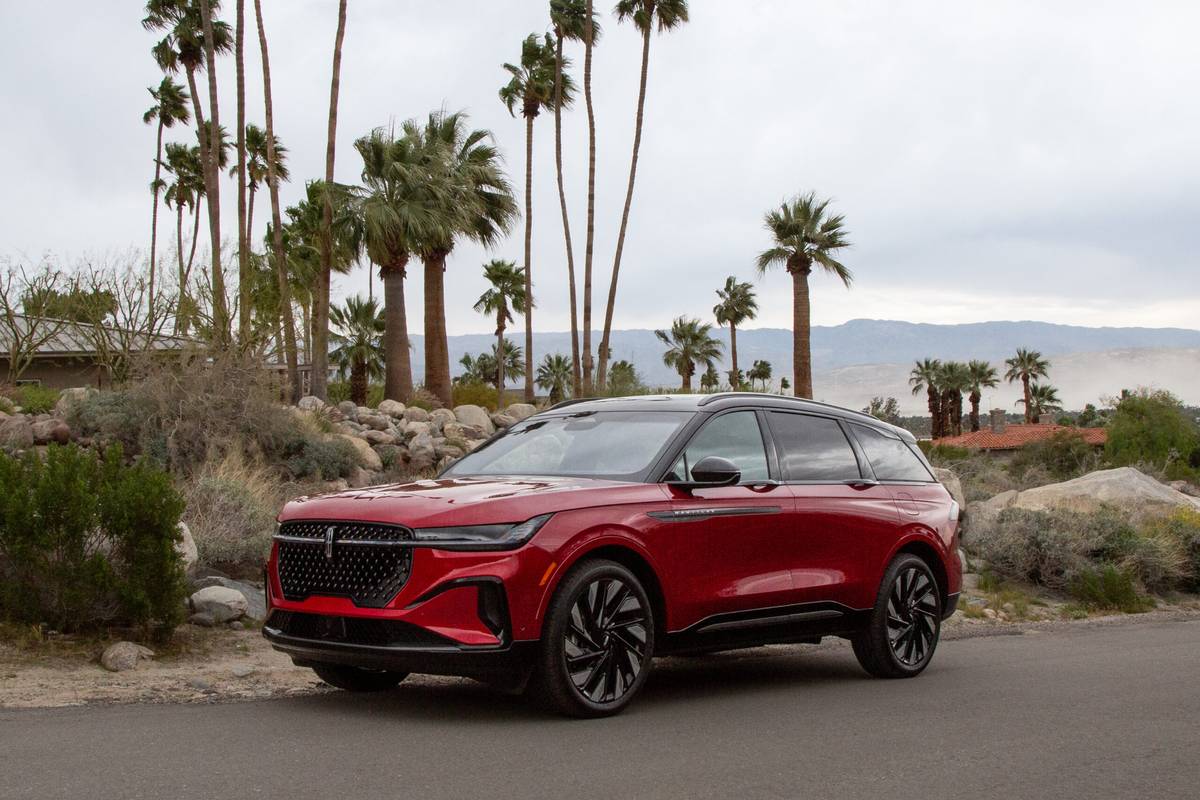chicagotribune.com's view
Chrysler makes a larger “mini“ van.
Sounds a bit contradictory.
Isn`t mini supposed to mean small?
Chrysler introduced mini-vans in 1984. Full-size vans had become so bigthat they gulped gas, were difficult to handle on the road and requiredspecial schooling when it came to parallel parking? But they held the wholefamily.
So Chairman Lee Iacocca hit on the idea to come up with a smaller, moremanageable, more fuel-efficient van that still would hold the family. TheDodge Caravan and Plymouth Voyager were born.
Chrysler now offers larger versions-Grand Caravan and Grand Voyager.Grand means the wheelbase has been stretched to 119.1 inches from 112 on theregular models, with length going to 190.5 inches from 175.9.
Despite the increased size, the Grand van still offers all the featuresthat made the mini so popular: It holds up to seven people but still has room for groceries or luggage, gets decent mileage and is far more attractive than a station wagon.
We test-drove a 1990 Grand Caravan SE. The extended length means you look twice and stop a bit sooner when trying to back into a parking spot, butthat`s about the only potential hardship versus a regular mini.
The extended length means extra cargo capacity and more room foroccupants to stretch.
Since the van has gotten bigger, Chrysler has come up with a more potentengine: a 3.3-liter, 150-horsepower V-6 teamed with a 4-speed automatictransmission. The 3.3 is more spirited than the 3-liter, 142-horsepower,Mitsubishi-built V-6 that`s optional in the regular mini-vans. The 4-speed,however, was a bit finicky and seemed to spend most of its time wanting toupshift.
For the 1991 model year, the mini-van will add a 3.8-liter V-6. Anothernew Chrysler engine, a 3.5-liter, 24-valve V-6, is a future consideration for the vans. For now, that engine is earmarked for the 1993 LH body cars,replacements for the Eagle Premier and Dodge Monaco.
The 1991 model year also will mark the first major restyling of the vans. The change is aimed at warding off the new competition from the plastic-bodiedGM mini-vans-Chevrolet Lumina, Pontiac Trans Sport and Olds Silhouette-as wellas the all-new Toyota van (Transportation, Oct. 22) and the Mazda MPV.
Lumina, Trans Sport and Silhouette were brought out to wrest some of themarket from Iacocca`s baby vans.
Having recently driven the Lumina APV, a comparison is in order.
Lumina is built on a 109.8-inch wheelbase and is 194.2 inches long,compared with Grand Caravan`s 119.1-inch wheelbase and 190.5-inch length.
Lumina has bucket seats that handle up to seven. Each seat pops outindividually for added storage. The Grand Caravan has buckets for driver andfront-seat passenger, but bench seats in back for handling up to seven. Thebenches are harder to remove than the buckets.
The rear seats in the Lumina, however, run the width of the rearcompartme nt and rest up against the walls. You have to fold and move forward aseat to enter in back. Caravan has a passageway from front buckets to thebench behind and a walkway to the third seat bench. The nod for best floorplan goes to Grand Caravan.
The latching hardware under the Lumina seats prevents you from storingluggage underneath. Grand Caravan has enough space under the second and third seats for luggage.
Lumina rear seatbacks fold to serve as table tops, and each top has acouple of built-in cup holders. In the Caravan, only the third seatback foldedto allow more cargo room. A single cup holder and stowage compartment is builtinto each rear-wheel well. Lumina has the best potential as a traveling diner. Lumina has a plastic body that won`t rust. Caravan has galvanized bodypanels in all but the roof. Slight edge to Lumina for longevity.
The Chevy van is powered by a 3.1-liter, 120-horsepower V-6 teamed with a 3-speed automatic; Grand Caravan has a 3. 3-liter, 150-horsepower V-6 with 4-speed automatic with overdrive. Power and performance go to the GrandCaravan. The Lumina`s EPA ratings are 18 m.p.g. city and 23 highway; GrandCaravan`s ratings are 18 and 24.
When it comes to styling, the rounded, aero look on the Lumina generatesa love/hate relationship. Grand Caravan is boxier but pleasant, and the lookhasn`t worn thin yet.
One benefit of the aero treatment on the Lumina will be appreciated bysmokers. Put the driver`s window down and light up and there`s no turbulence, thanks to the rounded windshield and roof pillar up front. Open the GrandCaravan window, and you`ll get wind disturbance.
Stepup height in Lumina and Grand Caravan presents no problem. However,once seated in the Lumina, you have no inkling of where the sharply slantednose ends.
The windshield slants so sharply so far ahead of you, it makes you wonder how anyone can reach the glass to keep it clean. The long dash positions youso far back from the windshield that you feel as if you`re driving from theback seat. Caravan has a Pentastar ornament on the hood, which gives thedriver the needed depth perception to determine the space between you and the object ahead, whether it`s car, truck, van or pillar in the parking lot.
Neither the Lumina nor the Grand Caravan offer antilock brakes or four-wheel drive. In the 1991 model year, four-wheel drive will be optional inthe Grand Caravan. Antilock brakes are a possibility.
Base price of the Grand Caravan SE is $15,395. Base price of thecomparable Lumina CL is $15,745. The Grand Caravan we tested ran $21,104 with options.
Standard equipment in the Grand Caravan includes power brakes andsteering, remote fuel filler door release, 20-gallon fuel tank, tinted glass, remote hood release, AM-FM stereo with digital clock, gas-charged suspensionand rear-window washer/wiper.
The test vehicle also was equipped with the optional $1,903 luxuryequipment package, which included power windows/mirrors/door locks/seats,rear-window defroster, upgraded Infinity sound system, cruise control,overhead console and floor mats. Air conditioning runs $840, to which you can add a rear-seat air/heat system for $560 more.
Latest news



